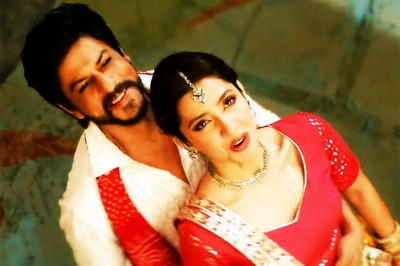
views
BANGALORE: In a charming little nook on Lavelle Road, nestled comfortably on the sheer white walls of Gallery Time and Space, the constellation of Kalighat paintings look like they are at home. Bearing testimony to the genealogical craftsmanship of men from nineteenth century West Bengal, they, that’s worth a king’s ransom speckle the gallery ushering in art lovers to a bundle of stories from a bygone era. The nineteenth century Bengal art that flourished at the time of the British rule has rightfully found a place in Bangalore, thanks to the ongoing exhibition, the first of its kind attempt in the country to exhibit a wide collection of works of such an order through a solo art show. More than three dozen Kalighat paintings adorn the walls of the gallery. The artworks for this exhibition have been acquired from the flamboyant cache of Parimal Ray, an art collector from West Bengal. Kalighat paintings, a midway approach between the Western and Indian schools of art, were the equitable avenue for artists from Bengal who wanted to experiment with a form that was an agreeable blend of two distinct styles. In the early years of the emergence of this school of art, most of the artists worked around the temple at Kalighat in south Kolkata where religious art works sold like hot cakes. That’s where the art form derives its name from. The paintings done on paper using natural dye was sold for a few annas. Afterwards, the artists found this a perfect means of making money and thus Kalighat paintings were birthed. Bengal Masters like Jamini Roy and others have found inspiration in Kalighat paintings and their interpretation of this school of thought is fairly evident in their works.At the exhibition, one can find slices of Bengal village life, the customary depiction of Gods and Goddesses and themes ridiculing the newfound status of Indians living an English life during the British Raj. Domineering Indian men sip on English tea, women not less domineering pompously rule the house and haggard husbands meekly fan wives perched comfortably on little stools — these form some interesting visuals. According to art critic Ajit Ghose’s description, The drawing is made with one long bold sweep of the brush in which not the faintest suspicion of even a momentary indecision, not the slightest tremor, can be detected. Often the line takes in the whole figure in such a way that it defies you to say where the artist’s brush first touched the paper or where it finished its work.Kalighat paintings are not done anymore, and that makes these art works something to be cherished. Priced between `20,000 to 90,000, the paintings are on exhibition till today at Gallery Time and Space, Lavelle Road.



















Comments
0 comment